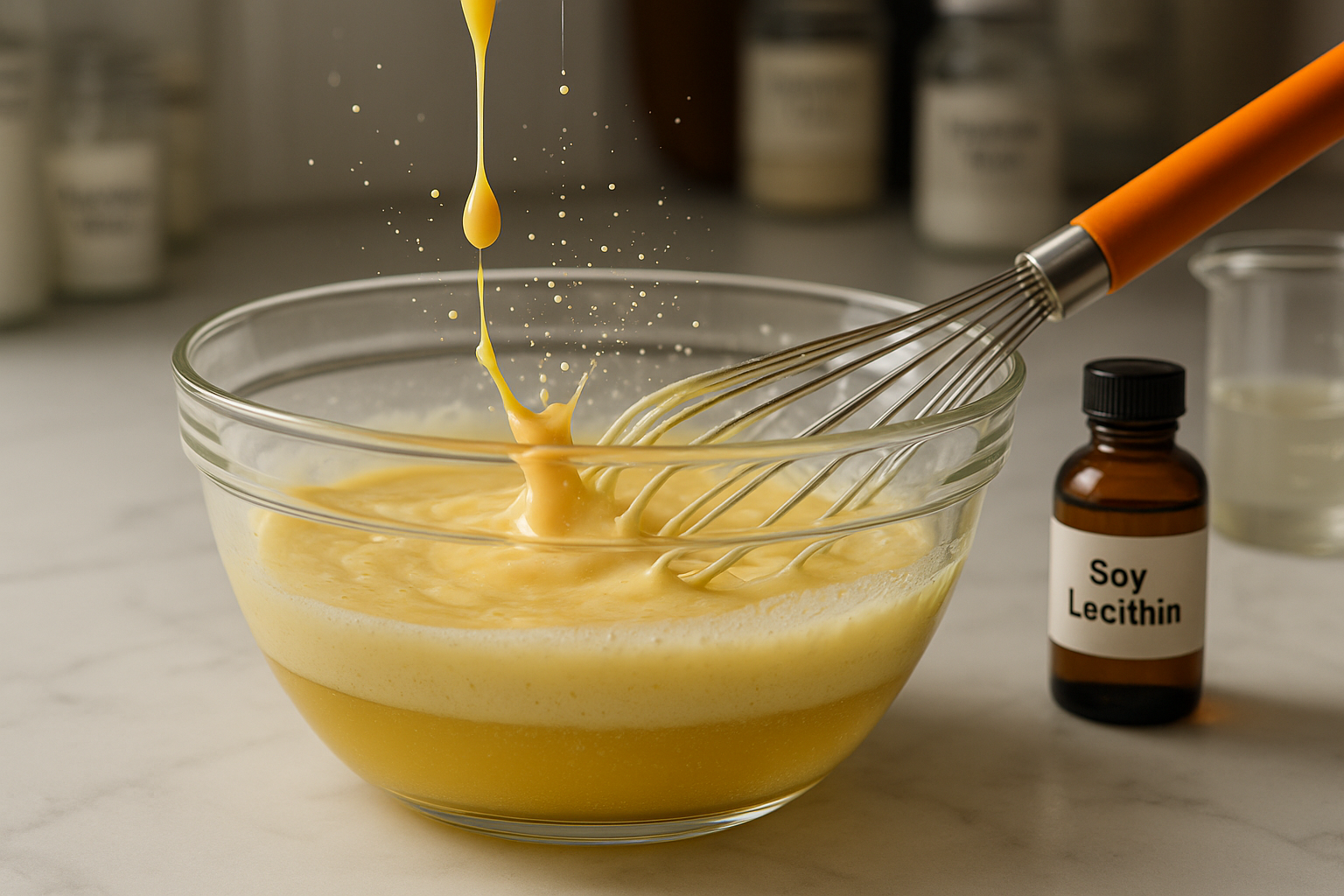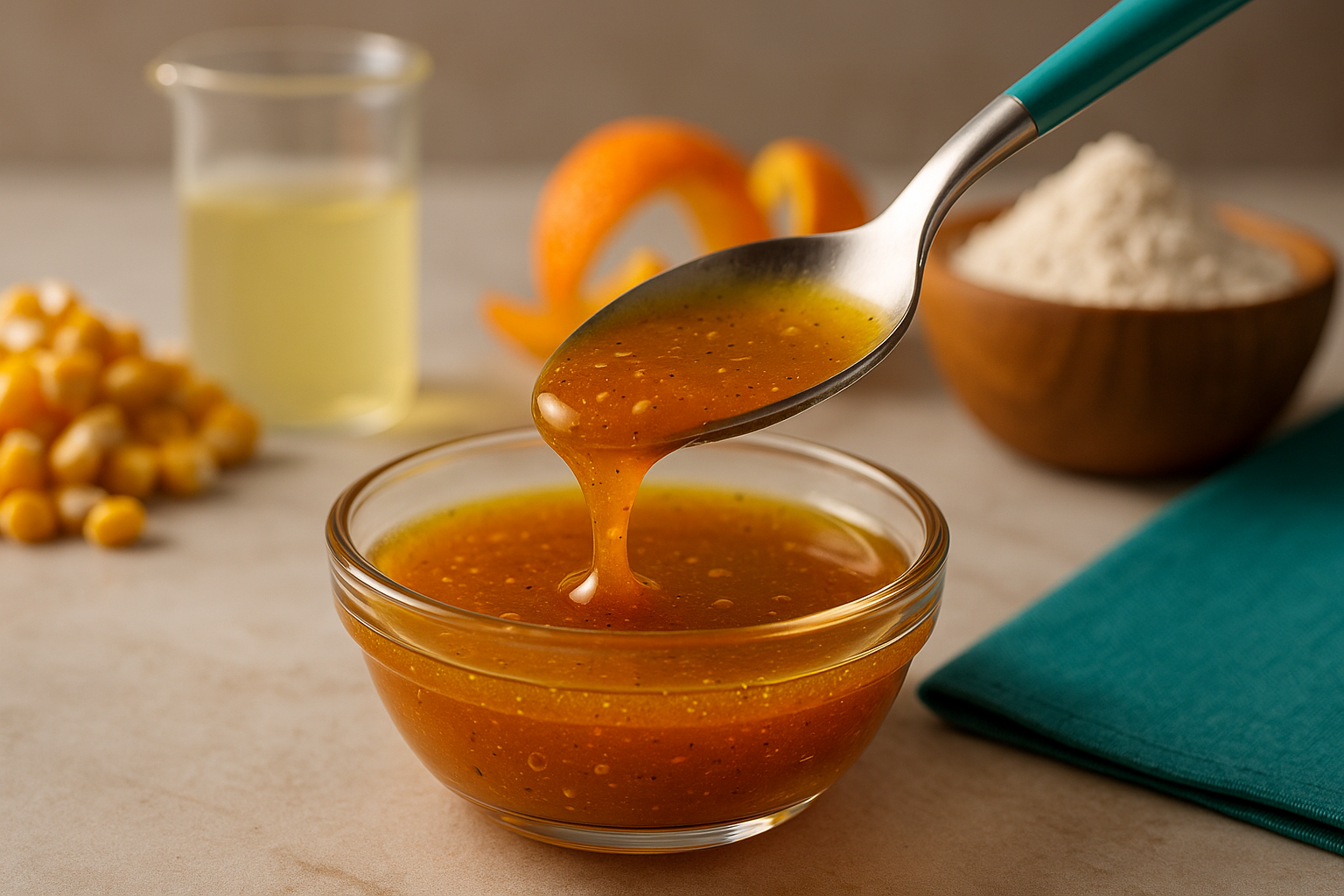
Exploring Sodium Alginate: From Sea to Solution
SUBSCRIBE TO OUR BLOG
Promotions, new products, and recipes.
has gained recognition for its incredible thickening, stabilizing, and gel-forming properties. Whether you're using it to enhance food texture, boost industrial processes, or engineer biomedical products, sodium alginate is a behind-the-scenes hero.
For culinary innovators, it’s known as a Natural Thickener for Cooking, especially valued in molecular gastronomy. In industrial fields, it’s found in paper coatings, textiles, and even welding rods. The compound is non-toxic, biodegradable, and environmentally friendly—making it a top choice for sustainable practices. But what exactly is sodium alginate, how is it made, and why is it so important across such a wide variety of sectors?
Let’s dive deep into the journey of sodium alginate—from ocean plant to industrial and culinary powerhouse.
From Ocean Depths to Industrial Desks: The Origin of Sodium Alginate
Sodium alginate is derived from brown algae species such as Laminaria, Ascophyllum, and Macrocystis, which thrive in cold coastal waters. These algae naturally produce alginic acid to help retain moisture and protect themselves from the surrounding marine environment. This alginic acid, when combined with sodium carbonate, forms sodium alginate—a water-soluble salt with numerous beneficial characteristics.
The discovery of alginate traces back to the late 19th century when British chemist Edward Stanford first isolated it. Since then, its usage has expanded dramatically across continents, especially in regions rich in seaweed farming like Norway, Canada, and parts of Asia.
What makes sodium alginate particularly fascinating is that its source—seaweed—is both renewable and sustainable. This natural origin allows the product to align well with eco-conscious industries looking to reduce their environmental footprint. This connection to nature is why many companies prefer Sodium Alginate 100% Food Grade, ensuring it’s pure and safe even for direct consumption in food and pharma products.

Turning Seaweed into Value: How Sodium Alginate Is Made
The production of sodium alginate involves a multi-step process that transforms raw seaweed into a fine, purified, and functional powder. Here's how it typically unfolds:
- Wet Chop Seaweed: The harvested brown seaweed is first washed thoroughly to remove dirt, salts, and debris. Then it's chopped while still wet to maximize the surface area and ensure better extraction.
- Form Sodium Alginate Solution: The chopped seaweed is mixed with an alkaline solution (typically sodium carbonate), causing alginic acid in the seaweed to react and form sodium alginate. This forms a thick, viscous solution.
- Residue Removed: Insoluble seaweed residues are filtered out of the solution, leaving behind a clear sodium alginate liquid.
- Wash and Press: The remaining alginate solution is treated with acids and alcohols to purify it, after which it's washed and pressed to remove excess liquid.
- Extrude, Dry, and Mill: Finally, the semi-solid alginate mass is extruded into strings, dried in controlled conditions, and milled into fine powder. This resulting product is what we call Sodium Alginate Powder - Thickening Agent, ready to be used in various industries.
This careful method ensures the end product is of high quality and consistency, essential for food-grade and industrial-grade applications.
Why Sodium Alginate Is a Game-Changer in Material Science
Sodium alginate boasts a set of remarkable physical and chemical properties that make it invaluable. Chief among them is its ability to thicken and form gels in the presence of calcium ions. This gelling occurs at room temperature and can be either reversible or irreversible, depending on the ion concentration and treatment.
Another key property is its high viscosity in water, which makes it an excellent stabilizer and emulsifier. It’s pH-resistant, non-toxic, and compatible with other materials. These traits make it a reliable component in products requiring consistency, like inks, cosmetics, and even biomedical capsules.
Its non-reactive nature means it doesn’t alter the taste, smell, or color of mixtures—an important feature in food applications. For those looking for a Natural Thickener for Cooking, sodium alginate offers a perfect blend of safety and performance. Furthermore, it exhibits excellent film-forming capabilities, especially when applied to surfaces like textiles or packaging materials.
Industrial Powerhouse: Key Sectors Leveraging Sodium Alginate
Industries far and wide have adopted sodium alginate into their processes because of its multifunctional benefits. In the paper and paperboard food packaging sector, it acts as a barrier agent—improving grease resistance and moisture control without compromising recyclability. It allows manufacturers to deliver safer and more eco-friendly packaging alternatives.
In the paper industry, sodium alginate is used as a sizing agent to improve the surface properties of paper. This treatment enhances printability and reduces ink bleed, making it ideal for high-quality printing applications.
Meanwhile, the textile sector uses sodium alginate in reactive dye printing. Unlike synthetic thickeners, it doesn’t react with dyes and is easily washed out, which ensures vibrant, crisp, and accurate designs on fabrics. The adoption of sodium alginate in textiles also supports sustainability goals since it’s biodegradable and less polluting than petrochemical alternatives.
These applications highlight the compound’s adaptability and the increasing demand across sectors seeking eco-conscious and high-performing materials.
Lesser-Known Yet Vital Uses of Sodium Alginate
While widely recognized in food and textiles, sodium alginate also serves some unique and technical purposes. In welding rods, it acts as a binder for the flux coating, ensuring the material adheres smoothly and burns cleanly during the welding process. Its consistency makes it ideal for shaping these rods uniformly.
Another important use is in wastewater treatment, where sodium alginate assists in flocculating suspended solids and binding heavy metals, helping purify water effectively. It’s also gaining traction as a binder in batteries, particularly in lithium-ion technology, where it improves mechanical strength and thermal stability of battery electrodes.
Additionally, in the pharmaceutical and nutraceutical fields, sodium alginate is a popular material for encapsulation, particularly for probiotics and drugs. It protects the active compounds from degradation in the stomach and releases them in the intestines.
In the world of paints and dyes, it serves as a thickener in inks, paints, and dyes, where its stable viscosity improves product application and performance. These varied uses solidify sodium alginate’s role as a multifunctional industrial component.
What Lies Ahead: Sodium Alginate Market Growth & Trends
With increasing global demand for sustainable and bio-based products, the sodium alginate market is poised for strong growth. Analysts predict continued expansion, especially in Asia-Pacific and North America, due to booming industries such as food processing, pharmaceuticals, and textiles.
Regulatory approvals for Sodium Alginate 100% Food Grade in the U.S. and EU markets have boosted its use in food and beverage applications. Moreover, growing health awareness is encouraging food manufacturers to move toward clean-label ingredients, where sodium alginate fits perfectly.
Rising R&D investment in biomedical engineering, especially in wound dressings, drug delivery systems, and tissue engineering, is expected to further push demand. Likewise, the emergence of alginate-based materials in the biodegradable packaging sector signals a shift in how industries address environmental concerns.
All these trends indicate a bright future for sodium alginate as a versatile and sustainable resource across both conventional and cutting-edge industries.
Why Cape Crystal Brands Is Your Go-To Source for Sodium Alginate
Choosing the right supplier is crucial when sourcing functional ingredients like sodium alginate. At Cape Crystal Brands, we pride ourselves on offering only Sodium Alginate 100% Food Grade—meeting the highest standards of safety and performance. Whether you're a chef looking for a Natural Thickener for Cooking, or an engineer sourcing materials for encapsulation or battery applications, we’ve got the right grade and quality for you.
Our Sodium Alginate Powder - Thickening Agent is crafted through strict quality controls and traceable sourcing methods, ensuring reliability in every batch. Plus, our team of experts is here to help you choose the best product for your application, with prompt shipping and personalized support.
Trust Cape Crystal Brands for your sodium alginate needs—we deliver innovation, quality, and sustainability in one powerful package.
FAQ
1. What is sodium alginate used for?
Sodium alginate is a naturally derived, multifunctional ingredient primarily extracted from brown seaweed. It is widely used across various industries:
· Food Industry: Acts as a thickener, stabilizer, and gelling agent—especially in molecular gastronomy and for products like ice cream, sauces, and dressings.
· Pharmaceuticals: Used in drug delivery systems and as a base for encapsulating medications and probiotics.
· Textiles and Printing: Functions as a dye thickener that doesn’t interfere with color accuracy.
· Industrial Applications: Used in welding rods, wastewater treatment, and as a binder in batteries.
· Cosmetics and Personal Care: Added to products for its thickening and skin-soothing properties.
Its broad utility makes it essential in both commercial and consumer-grade products.
2. Is sodium alginate good or bad for you?
Sodium alginate is generally recognized as safe (GRAS) by the FDA when used in recommended amounts. It is non-toxic, non-allergenic, and derived from a natural source—brown algae. In food, it serves as a Natural Thickener for Cooking, helping improve texture without affecting flavor or nutrition.
Health benefits include:
· Helping regulate digestion by forming a gel in the stomach
· Acting as a dietary fiber with mild laxative effects
· Providing a feeling of fullness, which can help with weight management
However, excessive intake may lead to mild gastrointestinal discomfort. Always use food-grade sodium alginate, such as Sodium Alginate 100% Food Grade, to ensure safety and purity.
3. What is sodium alginate prescribed for?
Sodium alginate is often prescribed or recommended in combination with antacids for managing acid reflux (GERD) and heartburn. In these cases, it works by forming a viscous gel that floats on top of the stomach contents, preventing acid from rising into the esophagus. This creates a protective barrier that can reduce symptoms of burning, discomfort, and indigestion.
It may also be found in over-the-counter alginate-based reflux products and is sometimes included in prescription formulations for gastrointestinal support. Always follow a healthcare provider’s guidance when using sodium alginate therapeutically.
4. Is sodium alginate good for acid reflux?
Yes, sodium alginate is clinically effective for relieving acid reflux symptoms. When taken with an antacid, it forms a foamy gel that sits atop the stomach's acid, acting as a barrier between the acid and the esophagus. This mechanism significantly reduces the occurrence of reflux and the sensation of heartburn.
Unlike many traditional antacids that neutralize acid, alginate-based treatments physically block acid from flowing back. This makes it especially useful for people seeking non-systemic, fast-acting relief. Many prefer sodium alginate-based formulations because they do not affect the stomach’s pH balance or interfere with long-term digestion.

|
About the Author Ed is the founder of Cape Crystal Brands, editor of the Beginner’s Guide to Hydrocolloids, and a passionate advocate for making food science accessible to all. Discover premium ingredients, expert resources, and free formulation tools at capecrystalbrands.com/tools. — Ed |
Enjoyed this post? Subscribe to The Crystal Scoop
Food-science tips, ingredient know-how, and recipes. No spam—unsubscribe anytime.
- Choosing a selection results in a full page refresh.



